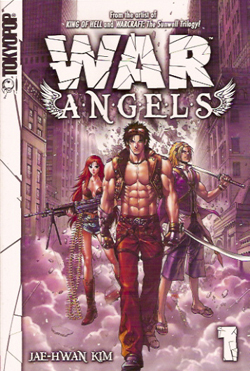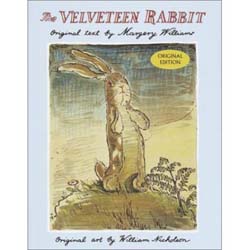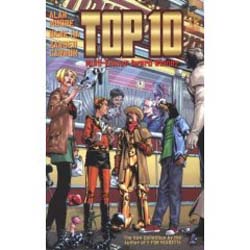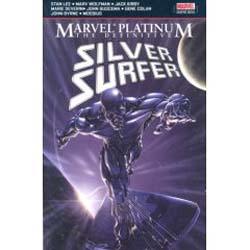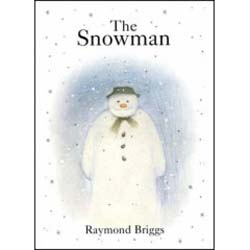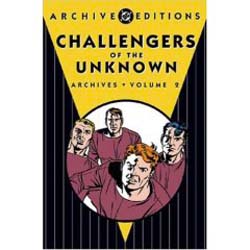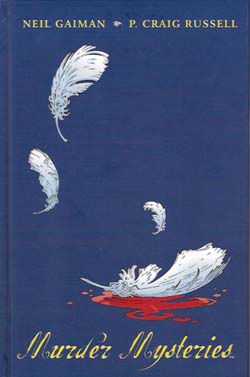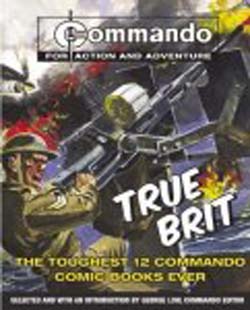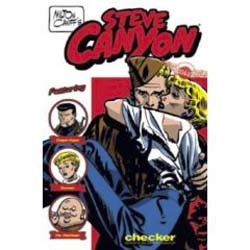
By Milton Caniff (Checker Book Publishing Group)
ISBN 0-9710249-1-X
The third collection in the daily travails of Milton Caniff’s post-war aviation adventurer covers the period from February 8th 1949 until February 18th 1950, which those fine people at Checker have subdivided into three episodes for your convenience.
‘Operation Snowflower’ leads off the excitement and originally ran (seven days a week, mind) until May 18th. It opens with Canyon and crew anxiously awaiting news of Happy Easter and the unscrupulous Cheetah who were last seen falling out of Canyon’s plane. However the arrival of ruthless millionairess Copper Calhoon soon distracts them all as she informs them that she now also owns the company which Canyon is working for.
As the post-revolutionary Chinese Republic began to flex its muscles in the build-up to the Korean War, the ever-contemporary Caniff began weaving the snippets of research and speculative news items he scrupulously collected into the grand story unfolding on his drawing board. Ever the patriot, his opinions and pro-“Free World†stance gives some of these strips a somewhat parochial if not outright jingoistic flavour, but as with all fiction viewed through the lens of time passed, context is everything.
Unlike his unpopular stance on Vietnam two decades later, this was not an issue that divided America. However the public and officials of the USA treated Communists and “Pinkos†within their own borders, the Red Menace of Russia and China was real, immediate, and actively working against Western Interests. The real talking point here is not the extent of a creator’s percieved paranoia, but rather the restraint which Caniff showed within his strip compared to what was going on in the world outside it.
Calhoon has Canyon flying uranium ores out of the rugged mountain country, and Red agents are agitating to get the raw materials for their own arms programs. The sabotage and unrest they’ve instigated have made the task dangerous and nearly impossible. As all the hard-bitten pilots continue their task Calhoon pressgangs young Reed Kimberly into becoming a companion for the locals’ mysterious ruler – “the Crag Hagâ€. Keeping the natives on-side is vital and the reluctant lad is nervous about his diplomatic role, but unbeknownst to all, the fearsome sounding Empress is actually a beautiful young teenager named Snow Flower, hungry to hear about the fabulous land of America, and desperate to see anyone her own age – especially boys!
The situation grows progressively worse as the Communist-backed rebels tighten their encirclement of the capital city of Damma. The fall is a foregone conclusion and Calhoon is making her escape plans whilst her men continue their ore flights out. As the city falls she is wounded, forcing Steve to fly her to safety on the last plane out. The Princess, Reed and the imposing Soldier-of-Fortune Dogie Hogan are forced to flee on foot, in a cracking sequence, pursued by the victorious and vicious rebels. When Canyon flies a rescue mission, only the heartbroken Kimberly awaits him. Snow Flower and Hogan have returned to the mountains to organise a resistance movement to fight the Communists.
‘Dragonflies’ follows, originally running from May 19th to October 9th. Steve and the recuperating Reed are cooling their heels, fretting about their total lack of cash or work, when the larger-than-life author and lecturer Romulus Brandywine commissions Steve to fly him around the highly volatile region on a research trip, accompanied by his secretary, the sassy and capable Summer Smith.
Whilst en route from India to the China coast their plane is forced down by Communist rebels, but after much intrigue and action they escape to become part of an anti-communist Foreign Legion of Pilots fighting a holding action against the seemingly unstoppable Red Hordes: The Dragonfly Squadron of the Western Chinese faction.
As if the ongoing conflict trapping the valiant fliers were not enough grief, Steve and Summer’s mutual attraction causes friction amongst the men, but when the hero finds himself once again in a last ditch siege, there’s a pleasant surprise in store as Happy Easter turns up, leading a division of anti-Red cavalry to – temporarily – save the day.
‘Teammates’ began on October 10th 1949 and ran well into 1950 (although this book concludes with February 18th instalment). It introduces a possible rival and definite complication with the unwanted arrival of a new flier at the temporarily reprieved airbase. Doe Redwood is an air-ace who flew half-way around the world to join the fight, in a brand-new top-of-the-line fighter plane, infinitely superior to the crates the veterans use. But she’s a woman and therefore trouble…
No sooner has the dust settled from the traditional culture-clash, battle-of-the-sexes than Steve and Doe have to go undercover into Communist-held territory to liberate vitally needed parts and supplies. However the mission goes spectacularly wrong when they encounter and old friend and foe – svelte Soviet Submarine commander Captain Akoola – and her ward Convoy…
Exotic, frenetic, full of traditional values and as always, captivating in both word and picture, this is another old-fashioned, unreconstructed delight. Caniff was the master of the daily strip drama and he always will be.
© 2004, Checker Book Publishing Group, an authorized collection of works
© Ester Parsons Caniff Estate 1949, 1950. All characters and distinctive likenesses thereof are trademarks of the Ester Parsons Caniff Estate. All Rights Reserved.
